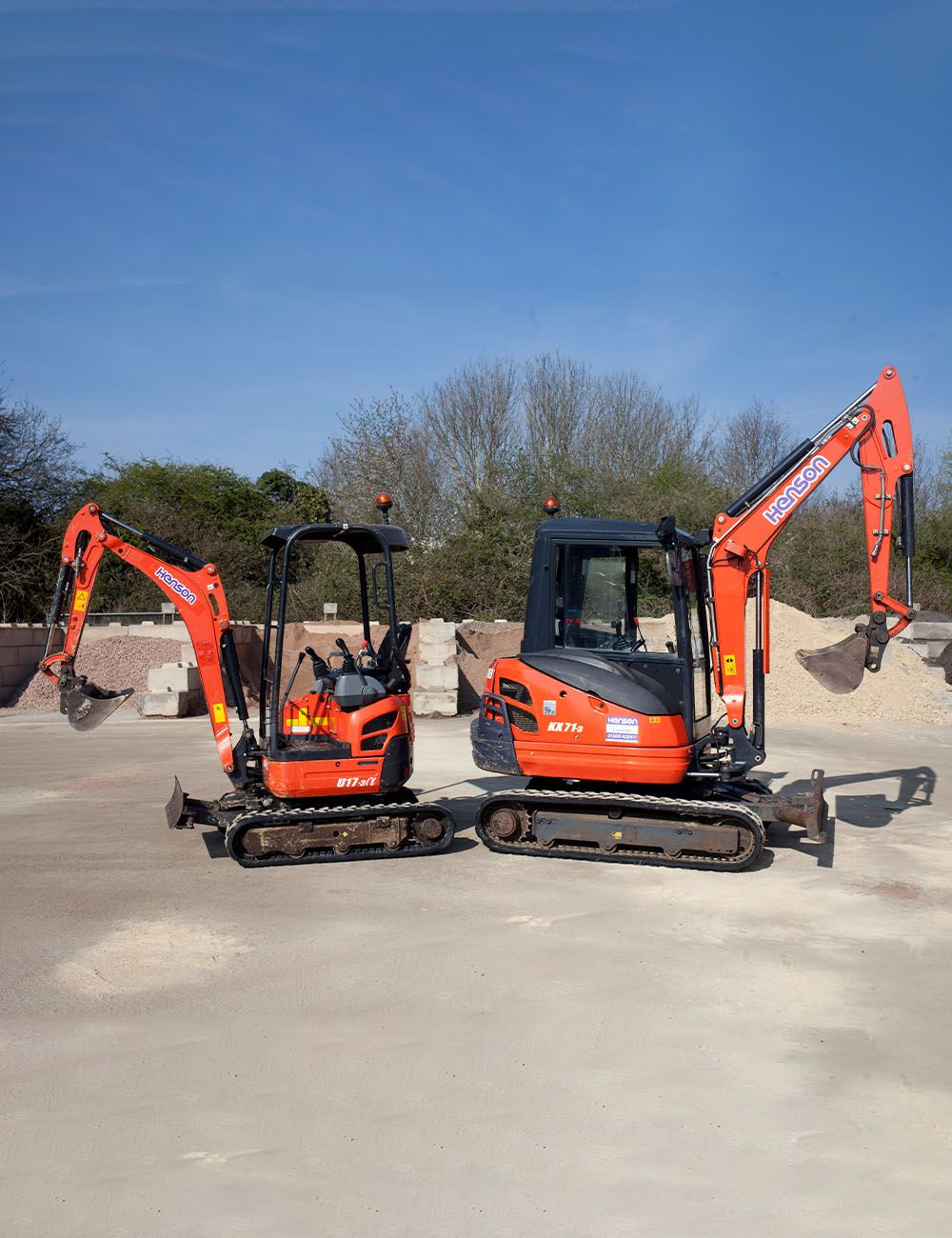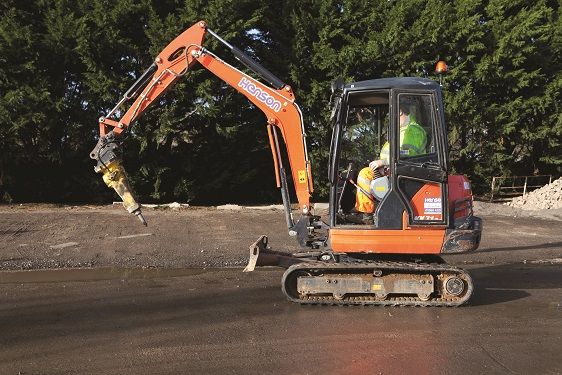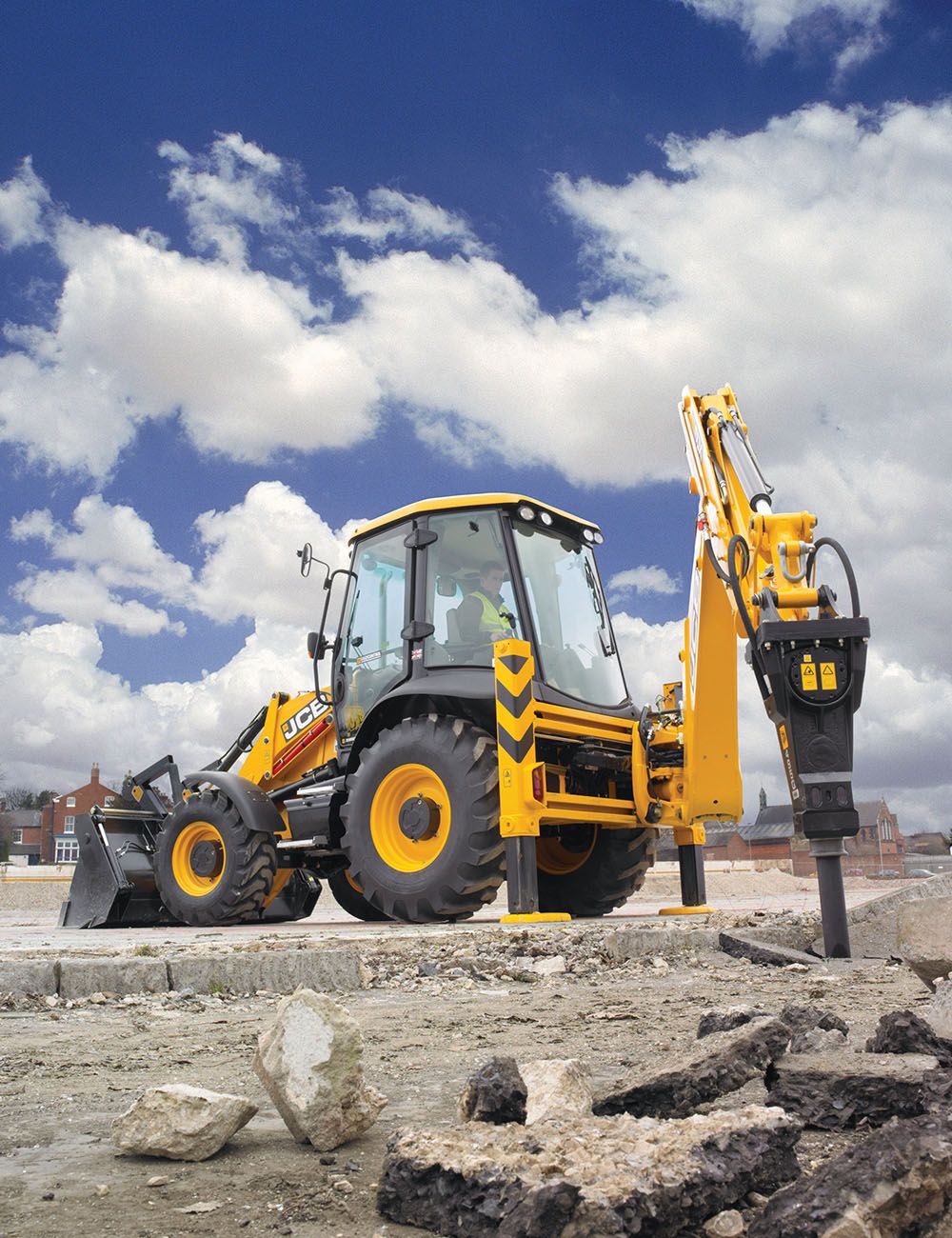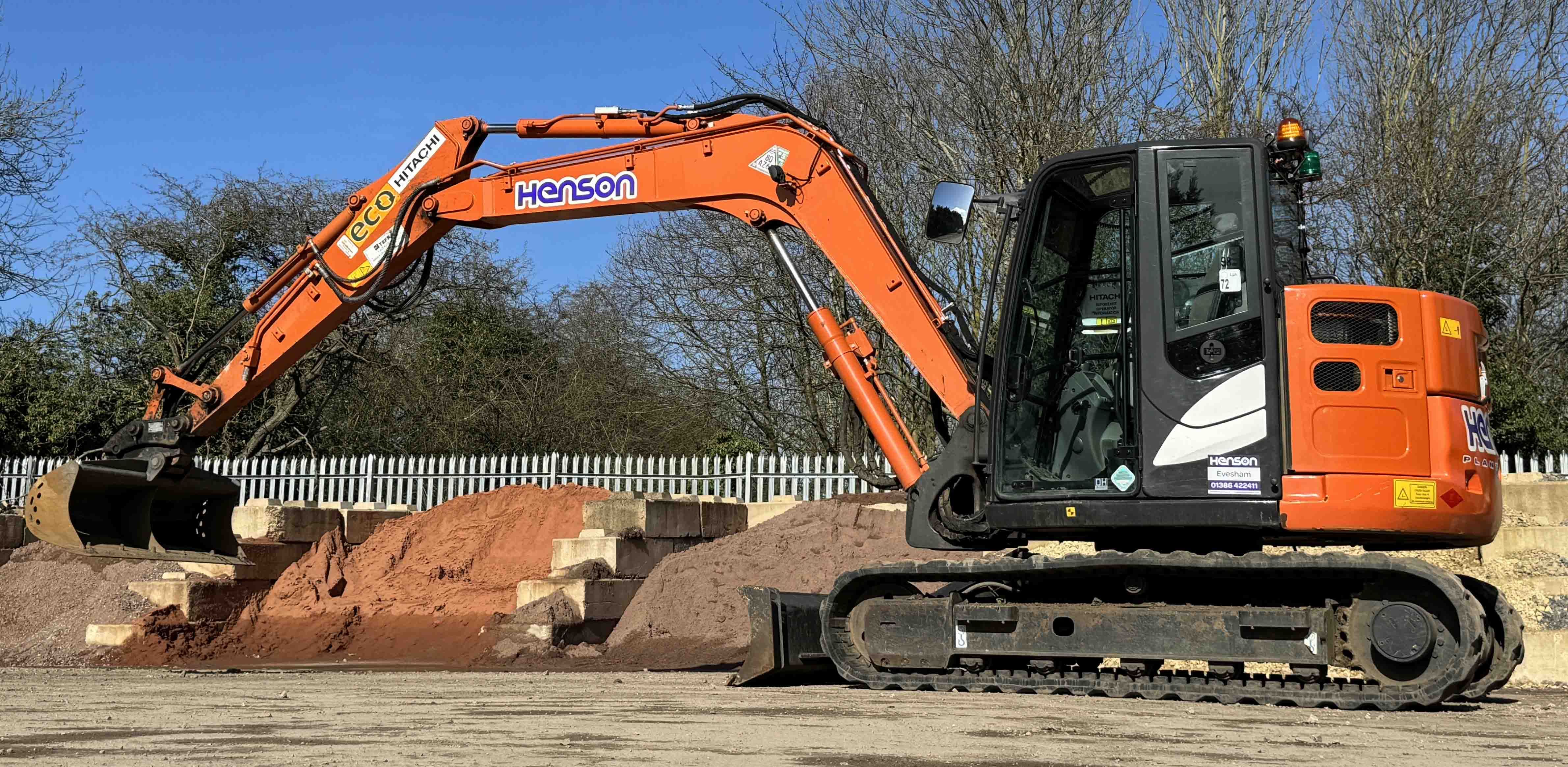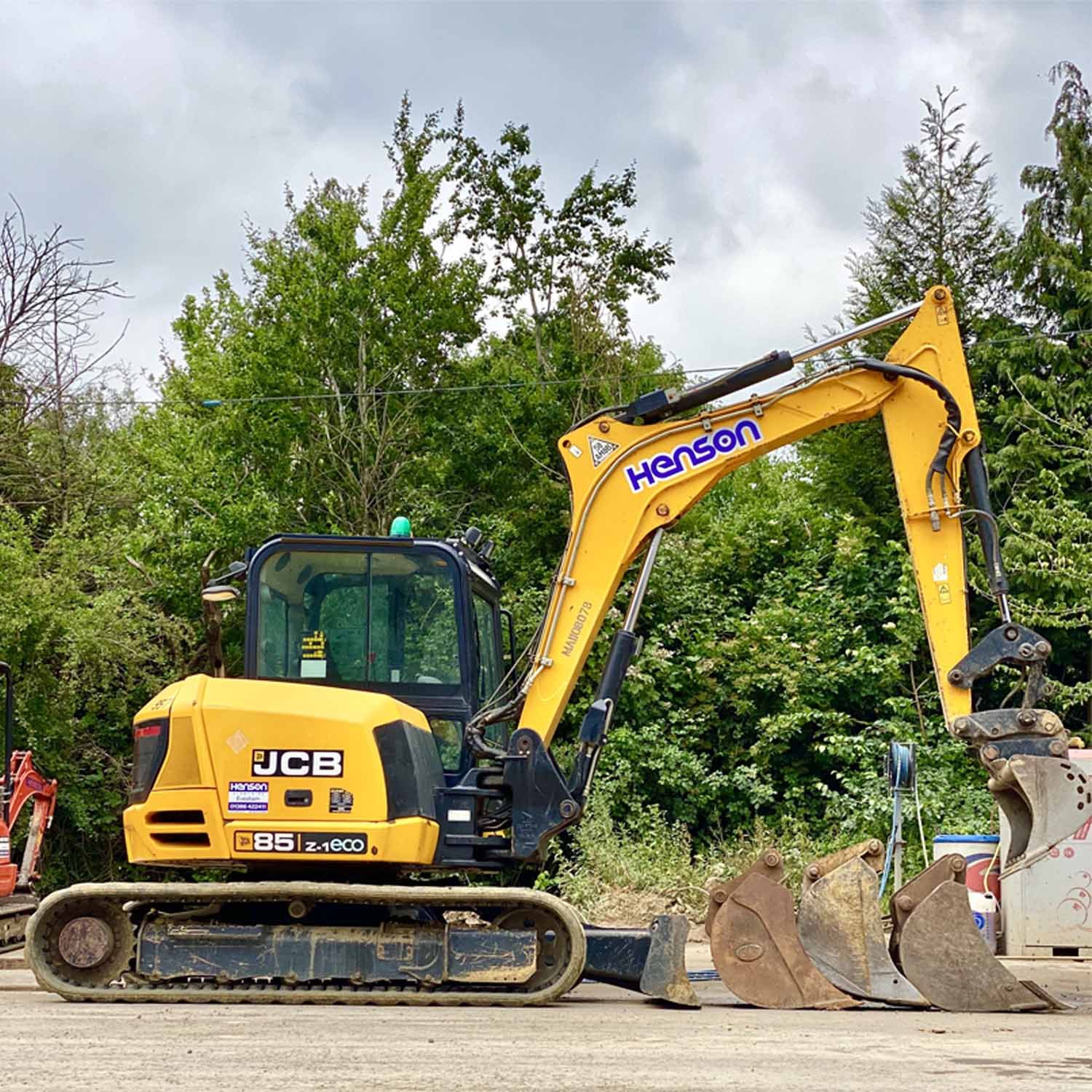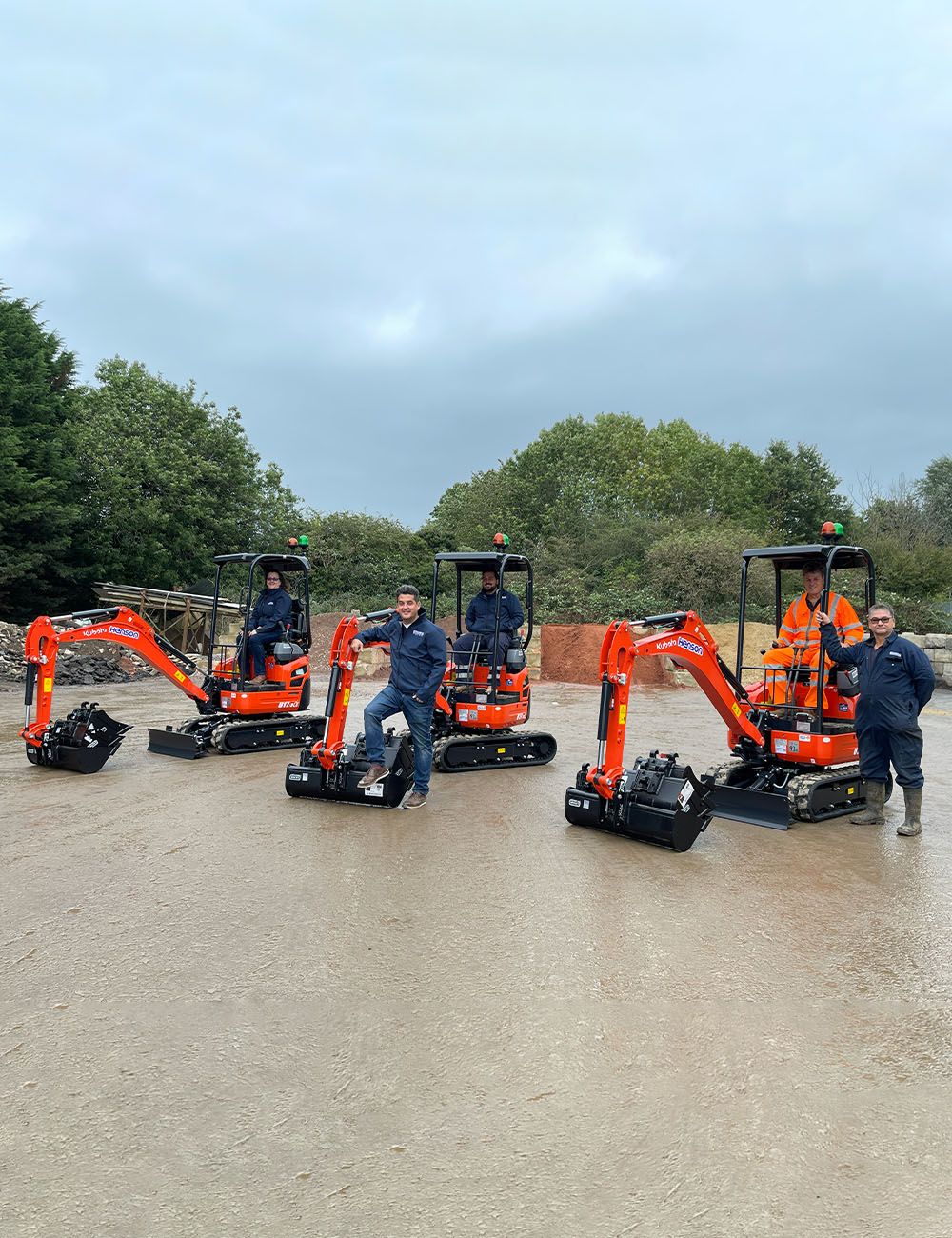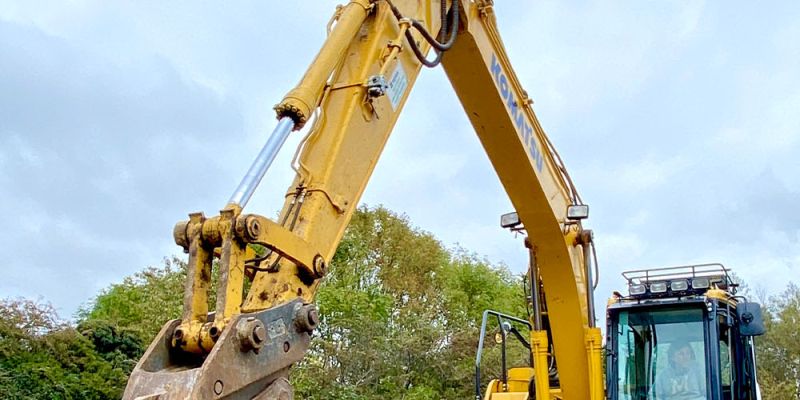
What is an excavator?
Blog
If you've found yourself clicking on this article, it's likely because you've been delving into the world of plant hire and machinery - and what better way to start than with the famous excavator itself. In this article, we'll explain what an excavator is, what types there are and when they're best used.
So, what is an excavator?
An excavator, commonly known as a digger, is a powerful and versatile construction machine that plays a crucial role in various industries. Excavators are specifically designed to handle the most demanding earthmoving tasks, making them an indispensable tool in construction, mining, and other related fields.
A bit of backstory and history
The first excavator was made over 200 years ago, in 1796, by Scottish inventor James Watt and English entrepreneur Matthew Boulton. While these prototypes were steam-powered, these excavators made a massive contribution to the process of industrialisation and helped construct canals, railway lines, copes-cast mines and large industrial plants.
In the late 1800s, equipment builders discovered that applying hydraulic force increased the power of excavating equipment during this time. The creation of a hydraulic excavator revolutionised their capabilities and paved the way for the development of modern hydraulic excavators.
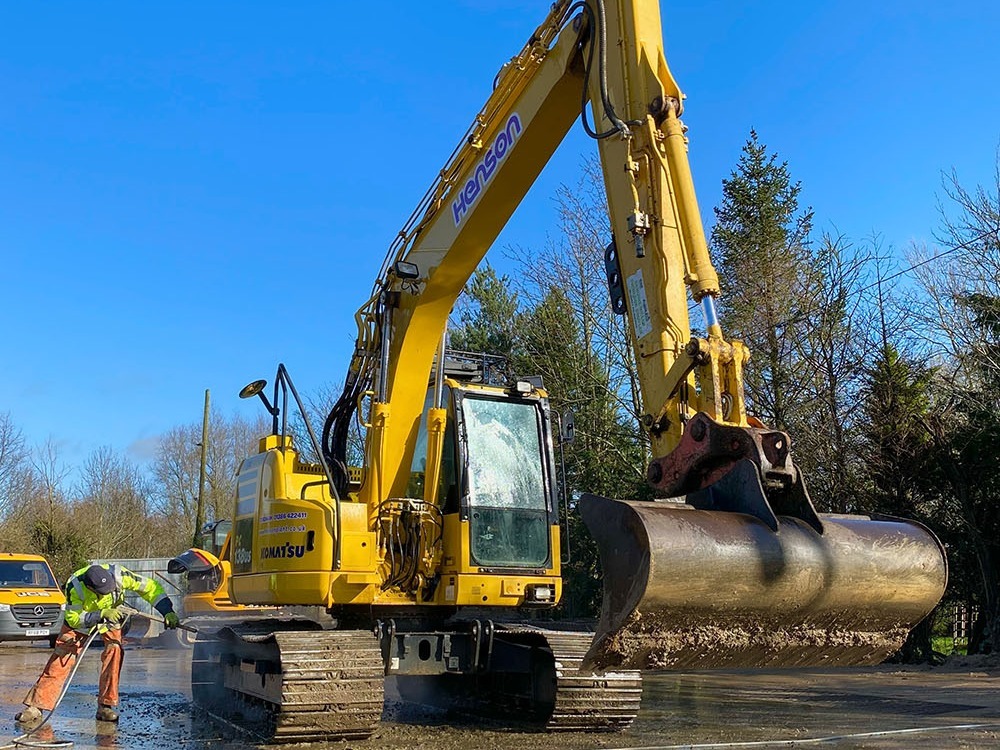
The body of an excavator
From digging foundations and clearing land to loading trucks and lifting heavy objects, an excavator is a versatile workhorse that significantly improves productivity and reduces manual labour.
Its ability to navigate rough terrains and tight spaces makes it an essential machine in countless construction projects worldwide. Let's take a look at its parts more in-depth to get a better understanding of each element.
Boom: The boom is the long, vertical arm of the excavator that provides the lifting and digging capability. It connects to the house and gives the machine its reach.
Arm: The arm, also known as the dipper, is attached to the end of the boom. It allows horizontal movement, flexibility, and precise control during digging operations.
Bucket: The bucket is the attachment at the end of the arm. It comes in different sizes and shapes depending on the type of work required. The bucket is used for digging, scooping, and lifting materials.
House: The house, also called the cab, is the operator's compartment. The rotating structure sits atop the undercarriage and can swivel 360 degrees. The operator controls the excavator from within the house.
Tracks: Excavators typically have tracks instead of wheels. The tracks, also known as tracks or crawlers, provide stability and mobility, allowing the machine to move smoothly over various terrains.
Undercarriage: The undercarriage supports the excavator's weight and houses the tracks, rollers, and sprockets. It provides stability and manoeuvrability while distributing the machine's weight evenly.
Counterweight: The counterweight, located on the rear end of the excavator, helps balance the machine's weight when lifting heavy loads. It prevents the excavator from tipping forward during operation.
Hydraulic System: Excavators rely on hydraulic power to operate their movements. The hydraulic system includes hydraulic cylinders and pumps that control the actions of the boom, arm, and bucket.
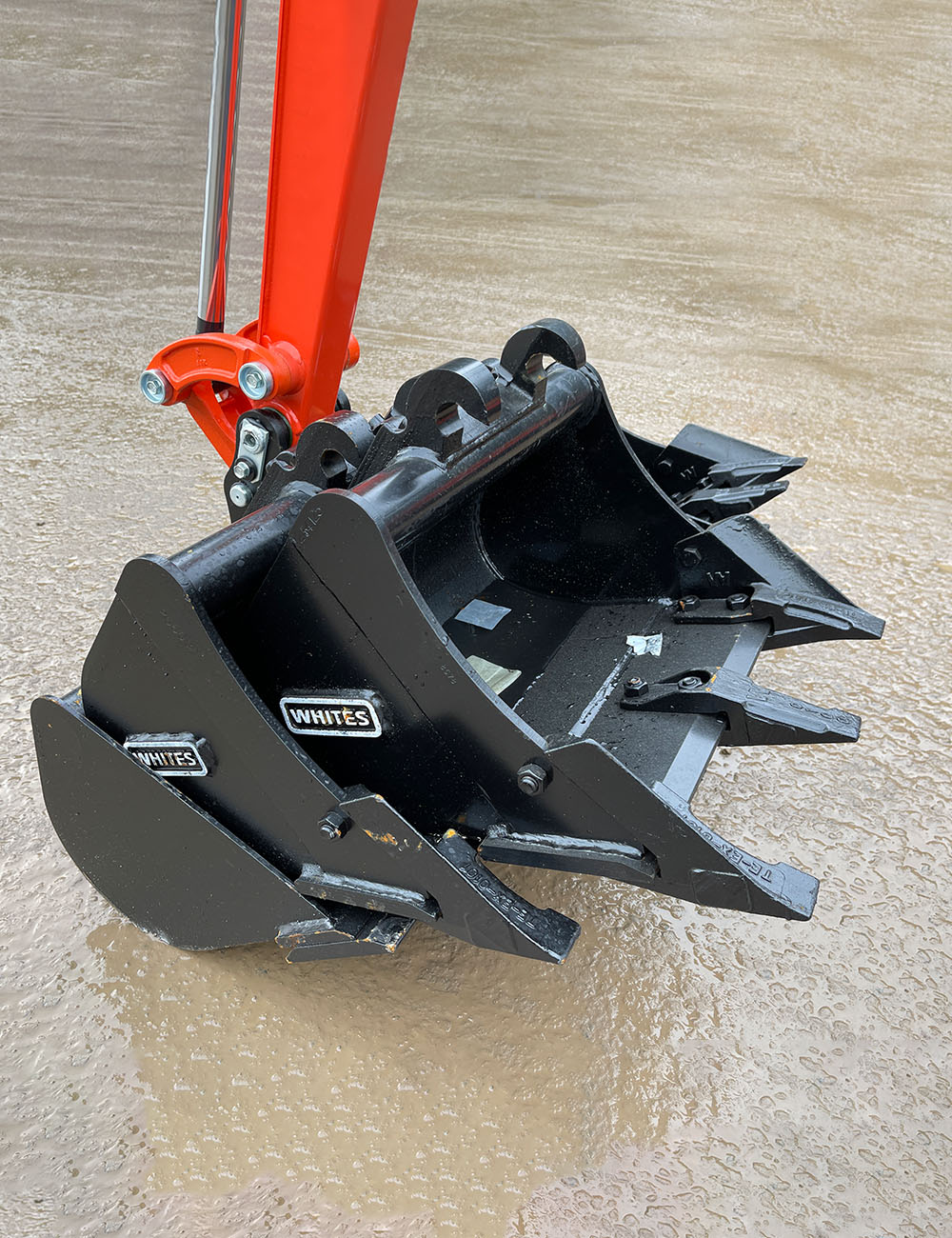
What types of excavators are there?
Excavators can come in many different types, sizes with different excavator attachments. Let's take a look at what types of excavators you can get.
Wheeled Excavator
These excavators have wheels instead of tracked excavators. They offer greater mobility and are often used in road construction, utility work, and projects that require frequent transportation between job sites.
Wheeled excavators offer incredible speed and mobility compared to crawler excavators. They can travel on roads and highways, allowing for efficient transportation between different job sites without additional trailers or transport vehicles.
Crawler Excavator
These excavators feature tracks instead of wheels, providing excellent stability and traction on uneven terrain. Crawler excavators are versatile and used in various applications, including digging, demolition, and heavy construction projects.
Crawler excavators can be fitted with various attachments to perform different tasks. Standard attachments include hydraulic breakers, grapples, augers, and rippers. These attachments expand the machine's versatility and allow it to tackle various applications.
Suction Excavator
A suction excavator, or a vacuum excavator or vacuum truck, is a specialised type of excavator that uses high-powered suction to remove materials from the ground or other surfaces. Instead of traditional digging methods such as buckets or shovels, suction excavators employ a powerful vacuum system to extract soil, debris, liquids, or other substances.
Vacuum System: The key component of a suction excavator is its vacuum system, which consists of a large suction hose or pipe connected to a powerful vacuum pump. The pump creates a strong airflow that sucks up materials into a storage tank or debris container.
Suction Nozzle: A specialised nozzle designed to efficiently gather materials at the suction hose's end. Depending on the material collected or the application, the nozzle may have various attachments or configurations.
Storage Tank or Debris Container: The vacuum system collects materials in a tank or container mounted on the truck or trailer. This tank can be emptied later by tilting the container or using a separate disposal method.
Long Reach Excavator
A long-reach excavator, also known as a long-reach arm excavator or long-reach boom excavator, is a specialised type of excavator that is equipped with an extended arm and boom assembly. The extended reach allows the excavator to reach greater distances horizontally and vertically, making it ideal for applications that require extended digging, dredging, or demolition capabilities.
Long-reach excavators are designed with more extended booms and arms compared to standard excavators. This extended reach allows them to access areas further away from the machine's base, such as deep trenches, rivers, lakes, or tall structures.
The extended arm and boom enable long-reach excavators to dig deeper than traditional excavators. This makes them well-suited for projects that involve deep excavation, such as dredging rivers or lakes, creating foundations in waterlogged areas, or cleaning out sediment.
In addition to increased horizontal reach, long-reach excavators also provide improved vertical reach. They can reach higher points, allowing for tasks like demolishing tall buildings, clearing elevated structures, or removing debris from elevated areas.
Dragline Excavator
A dragline excavator is a heavy-duty excavation machine that is primarily used in large-scale mining and civil engineering projects. It is characterised by a long boom and a bucket suspended from a cable or dragline that is connected to the boom. The bucket is typically attached to the dragline by a hoist rope system, allowing it to be raised and lowered for digging and material handling operations.
Dragline excavators are among the largest excavation machines in the world. They can range in size from compact models used for smaller projects to massive machines used in open-pit mining operations. The largest draglines can reach over 100 metres and have a bucket capacity of several cubic metres.
The dragline excavator gets its name from the dragline, which is a single, long cable or rope that extends from the boom to the bucket. The bucket is dragged along the ground or other surfaces to excavate material. The bucket is typically equipped with teeth or cutting edges to facilitate digging and scooping.
Unlike other excavators that use hydraulic power, dragline excavators rely on the hoist rope system to lift and move material. The cable or dragline is operated using large winches and drums located on the machine. This allows for precise control when lifting and moving heavy loads.
Skid Steer Excavator
A Skid Steer Excavator is a versatile piece of construction equipment that combines the features of a skid steer loader and an excavator. It is typically smaller than traditional excavators and is designed for manoeuvrability and efficiency in tight spaces.
Skid steer excavators are compact machines with a small footprint. They are designed to operate in confined areas where larger excavators may not have access. The compact size allows easy transportation to and from job sites and manoeuvring in restricted spaces.
Many skid steer excavators feature a zero or minimal tail swing design. This means that the counterweight and upper structure do not extend beyond the tracks during operation. This reduces the risk of damage to surrounding structures and improves manoeuvrability in tight spaces.
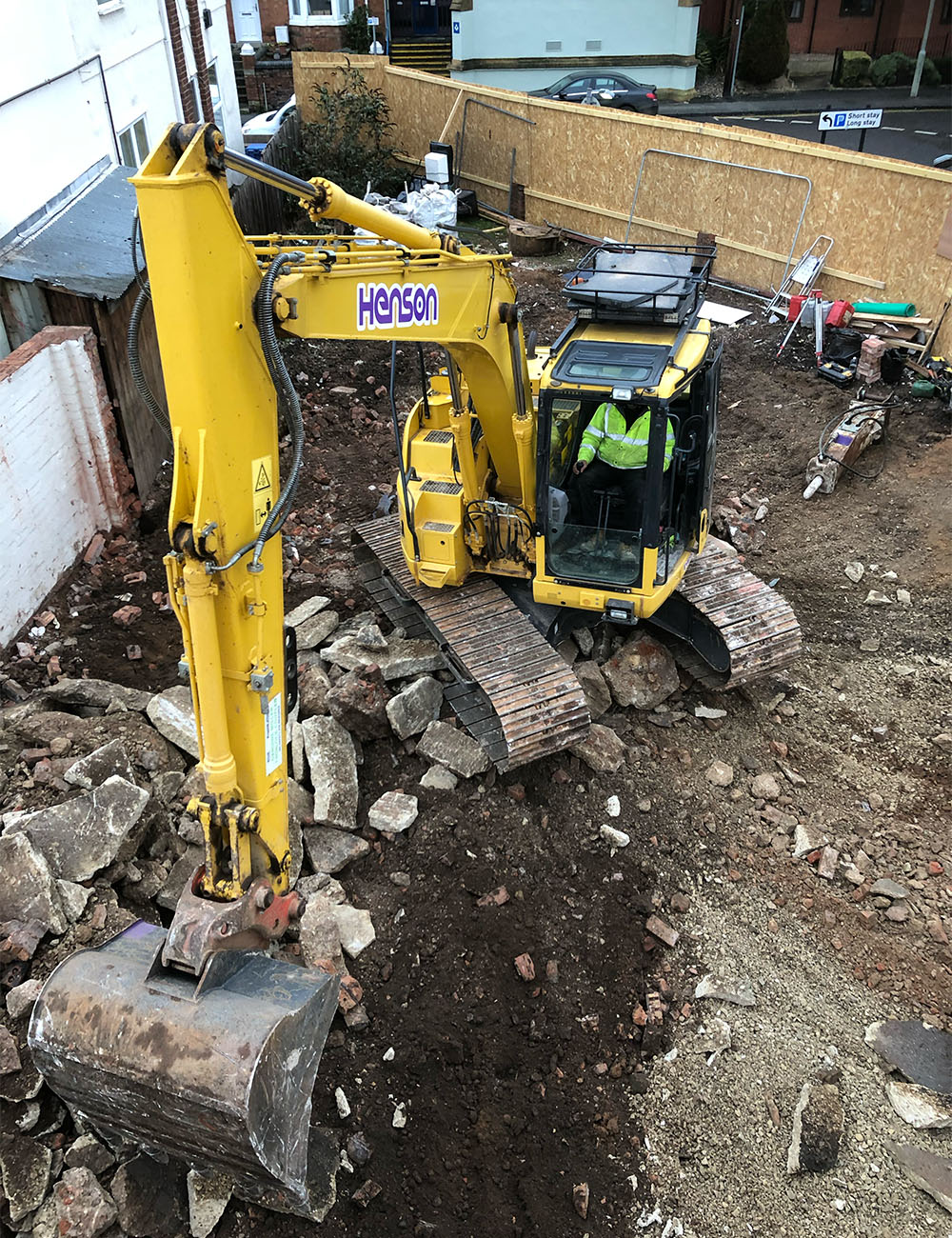
Different sizes
There are different excavator sizes that allows different operating weight. Let's take a closer look at these below:
- Mini Excavator: Mini excavators are small-sized compact excavators that are ideal for working in tight spaces or smaller construction sites. Mini excavators are commonly used for landscaping, small-scale digging, and utility work.
- Standard/ medium Excavators: Standard excavators, also known as medium-sized excavators, range in weight from 8 to 40 tons. These excavators are versatile and suitable for a wide range of construction projects. They are commonly used for digging foundations, general excavation, and demolition work.
- Large Excavators: These are the largest excavator types and are heavyweight machines that weigh over 40 tons. They have a high lifting capacity and are used for heavy-duty tasks such as mining, quarrying, and large-scale earthmoving projects.
What are excavators mainly used for?
Digging and Trenching:
Excavators excel in digging tasks when having steam shovel attachments - making them essential for creating trenches and digging holes for utility lines, drainage systems, pipelines, and foundations. They can efficiently excavate soil, rocks, and other materials to the required dig depth and width.
Demolition and Debris Removal:
Demolition excavators equipped with hydraulic attachments like demolition hammers or shears are used for demolishing structures such as buildings, bridges, and concrete surfaces. Excavators are also instrumental in removing and clearing debris resulting from demolition activities.
Earthmoving and Site Preparation:
Excavators play a crucial role in earthmoving operations, including excavation, grading, and levelling. They can remove large volumes of soil, rocks, and debris to prepare sites for construction projects. Excavators can also be used to create embankments or fill trenches as needed.
Landscaping and Gardening Projects:
Excavators are used for landscaping and gardening tasks, including shaping terrain, creating ponds or water features, and clearing land for gardens or parks. With specialised attachments like grapples and augers, excavators assist in tree removal, stump grinding, and hole drilling for planting trees or installing fences.
Material Handling and Lifting:
Excavators equipped with lifting attachments, such as buckets, forks, or grapples, are utilised for moving and placing heavy materials on construction sites. They can load trucks, transport construction supplies, and handle large objects, enhancing efficiency and productivity.
Pipe and Cable Installation:
Excavators with trenching attachments are commonly employed for laying underground pipes, cables, and conduits. They can dig trenches of specific dimensions and depths, ensuring precise installation and utilities protection.
Road Construction and Maintenance:
Excavators contribute to road construction projects by excavating roadbeds, digging ditches for drainage systems, and removing obstructions. They are also used for repairing roads and resurfacing asphalt.
Mining and Quarrying:
Excavators play a critical role in mining and quarrying operations. They are utilised for extracting ores, minerals, coal, and aggregates. Excavators with large buckets or hydraulic shovels can efficiently dig and load materials onto trucks or conveyors.
Why choose an excavator?
Excavators offer numerous benefits that contribute to construction projects' efficiency, productivity, and safety. Let's take a look at some of the main benefits that can
Increased Efficiency:
Excavators are powerful machines capable of quickly handling large volumes of material. Their hydraulic systems provide strong digging force and excellent lifting capacity, allowing for efficient excavation, earthmoving, and material handling operations. Using excavators reduces manual labour and speeds up project timelines, increasing overall productivity.
Versatility:
Excavators are highly versatile machines with various attachments to perform multiple tasks. From digging, trenching, demolishing, grading, or lifting heavy objects, excavators can be fitted with specialised tools such as buckets, hammers, augers, grapples, and more.
Accuracy in Digging and Movement:
Excavators are designed to provide precise control and manoeuvrability, allowing operators to perform delicate tasks accurately. The hydraulic systems of excavators enable smooth and accurate movement of the boom, arm, and bucket, making them ideal for tasks that require careful digging, grading, and positioning.
Improved Safety Features for Operators:
Excavators have safety features to protect operators during operation. These features include reinforced cabins with excellent visibility, ergonomic controls, and operator protection structures that safeguard against falling objects and rollovers and prevent accidents.
Reduced Physical Strain and Fatigue:
By taking on heavy lifting and repetitive tasks, excavators minimise physical strain and fatigue on operators. This can improve worker well-being and reduce the risk of injuries associated with manual, labour-intensive tasks.
Cost Savings:
While the initial investment in an excavator may be significant, the long-term cost savings can be substantial. Additionally, their versatility eliminates the need for multiple specialised machines, thus minimising equipment rental or purchase expenses.
Environmental Considerations:
Excavators manufactured with modern technologies are increasingly designed to be fuel-efficient, reducing emissions and minimising environmental impact. Some models also offer hybrid or electric options, providing quieter operation and lower carbon footprints on job sites.
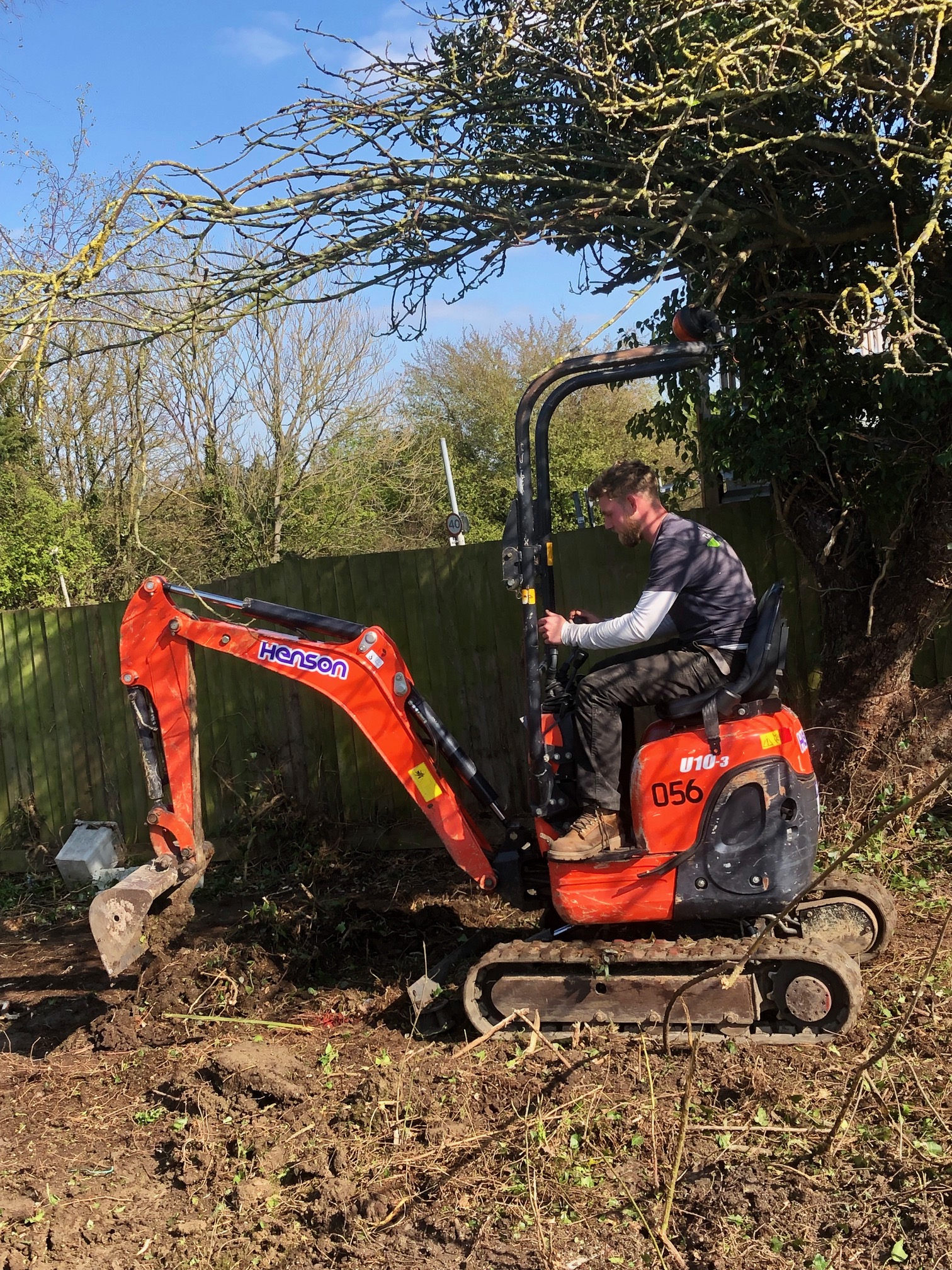
Always consider safety
Regular maintenance and adhering to safety guidelines are essential when using and operating heavy machinery such as an excavator. Sticking to the proper guidelines and checks is ideal to ensure safety. Let's take a look at some of the rules to follow below:
- Perform daily pre-start checks to ensure that the excavator is in proper working condition.
- Follow manufacturer-recommended maintenance schedules for oil and filter changes, greasing, and lubrication.
- Clean the excavator regularly to remove debris and prevent buildup that can hinder performance and cause damage.
- Inspect and replace worn or damaged parts.
- Provide comprehensive training to operators on the safe operation of excavators, including properly using controls and attachments and recognising potential hazards.
- Emphasise the importance of wearing appropriate personal protective equipment (PPE), such as helmets, gloves, safety glasses, and high-visibility clothing.
- Follow proper excavation practices, including identifying underground utilities, ensuring good trench and slope stability, and implementing proper shoring or trench box systems when required.
- Adhere to safety protocols, such as maintaining a safe distance from power lines,
- Store excavators in designated areas that protect them from weather conditions and potential damage. Secure the machines to prevent unauthorised access.
Final thoughts
Excavators are vital machines in the construction industry, offering various applications and benefits. Their versatility and adaptability allow them to perform various tasks to increase efficiency and productivity on construction sites, thanks to their powerful digging force and lifting capacity.
Looking ahead, the future of excavation technology appears promising. Advancements in hydraulic systems, automation, and telematics are revolutionising how excavators operate. Enhanced control systems and intelligent machine functionalities will improve efficiency, accuracy, and safety.
Developing alternative power sources, such as electric and hybrid excavators, will contribute to a greener and more sustainable construction industry. As construction demands grow and environmental considerations become more critical, excavators will remain a cornerstone of construction equipment, providing reliable performance and contributing to the success of projects on your job site. Whether you're looking for Volvo construction equipment, JCB or a Komatsu excavator - there is a wide range of options available online to purchase and hire.
Contact us with any enquiries or questions and we will help you get your project up and running!
Articles

